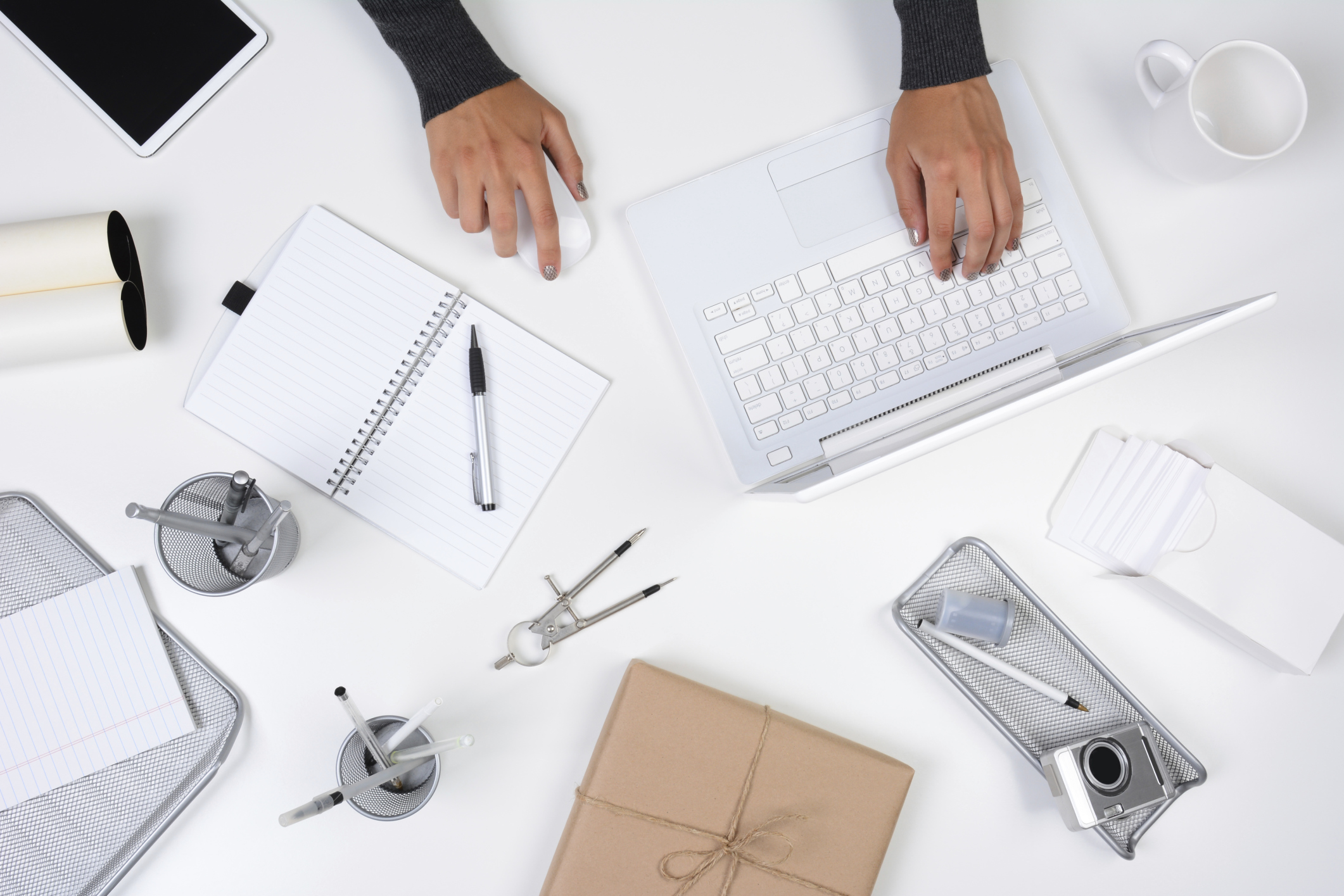Whether you’re an entrepreneur, a freelancer, or a student, having an office space in your home is important.
(Not everyone can get work done while lounging on the couch in pajamas!) We’ve already shared some handy productivity tips, but having the right environment can also make a world of difference.
Here are some essentials for your home office:
Designated Work Space: We don’t mean the kitchen counter or your comfy bed. Set aside a specific room or corner of a room as your “office.” This will help train your brain to be in “work mode” when you sit down and “off the clock” when you leave. By creating a designated work space, you’ll be able to achieve better work-life balance.
Desk: The right desk is key. Think about what type of desk best suits both your needs and the size of the space. Do you need just a simple flat table? Will you need multiple drawers for storage? What about a conference table so that you can really spread out or have meetings?
Comfortable Chair: If you don’t have a comfortable chair that you love sitting in, chances are you won’t end up actually using your office much (and will instead head to that comfy couch or bed). Look for a chair with arm rests and the ability to tilt, swivel, and roll.
Computer, Printer, and WiFi: This is how the work actually gets done. Make sure that you have functional tools to research, create, and communicate in our modern world.
Good Lighting: Aim for having both natural and artificial light. Exposure to sunlight has been known to improve mood, sleep patterns, and productivity. And when you’re working past sundown, you’ll need good (soft, non-fluorescent) artificial light. We recommend having both a desk lamp and an overhead lamp to better adjust the light.
To Do List or Planner: Start each day with a list of specific tasks that need tackling. Make sure that the list is manageable and the timeframe is realistic. Making this a tangible to-do list (rather than using an app) gives you that extra satisfaction of crossing items off when you complete them, thus helping to spur your motivation through the work day.
Calendar: Have a place that allows you to look at the bigger picture and plan ahead. Sure, you might have a calendar on your computer or phone, but having an accessible, physical calendar that’s in plain sight allows you to easily glance at upcoming events. We like DIY chalkboard or Post-It note calendars.
Coffee and/or Tea: Whatever beverage of choice gets you going in the morning (or during that afternoon slump), make sure you have plenty of it on hand. You’ll save time and money if you don’t have to take frequent trips to the local coffee shop or store. Plus, sometimes even the ritual of making coffee or tea can help signal “work mode.”
Decorations & Inspiration: Some might call these “nice-to-haves,” but we think they’re essential. Having a window, piece of artwork, or family photo on display can give a nice reprieve from staring at your screen. Consider hanging a photo of the dream vacation you’re working toward or an inspiration quote or mantra to keep your motivated.
We hope that these tips help you create a productive work environment. An added benefit is that having a designated work area will allow you to see the rest of your home as a relaxing and fun area for spending time with friends and family. Close the door and you are done for the day.






